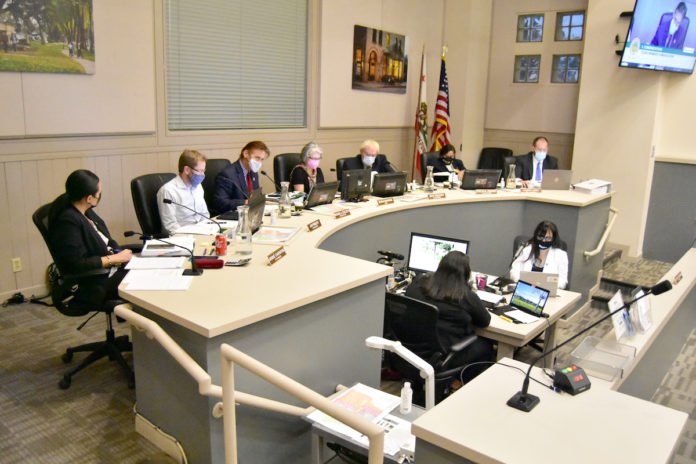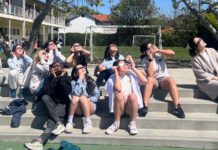The City Council on Wednesday approved spending $65,000 for a traffic study of Mission St. and Meridian Ave. It also authorized spending up to $168,000 on a “slow streets” program. Another $150,00 was at first slated for the installation of retractable bollards, but that option was dropped after bids came in dramatically higher than what the city wanted to pay.
The money is being redirected from $420,000 Metro granted in 2019 and originally intended for “Open Streets” events which the city planned to use for the 626 Golden Streets (Arroyo Fest), featuring car-free events for walkers and bikers. But the pandemic forced the cancellation of that event and Metro approved the city’s request to repurpose the money “to support pandemic recovery,” the city said.
The city previously appropriated $25,000 of the Metro money for a slow streets “pre-design outreach” and $48,000 for implementation. Because the bollard project fell through, that left $114,000 of the original $420,000.
But the money must be spent by year’s end. The city said it asked Metro to extend the grant deadline but it refused. The staff report said that “given the available left over time to spend the money, it is highly unlikely that the city can identify and build an alternative project before the deadline.”
Appalled at the prospect of losing the funds, a group of 15 Mission Street business owners asked the city to instead use the money to make improvements in the business district. “No grant money should be left on the table,” they wrote.
The city responded. During the council meeting, City Manager Arminé Chaparyan asked the Council for authorization to negotiate an amendment with the slow street contractor, for an amount not to exceed the $114,000 figure, to include additional streets to the contract’s scope.
Because of the close deadline, the list will be finalized by the Mobility, Transportation and Infrastructure Commission, which will likely have to schedule a special session to meet the deadline.
“It is imperative that we maximize these funds,” Chaparyan said. “We don’t want to return any funds.”
All the slow street projects are to be temporary demonstrations of various speed-slowing tactics such as adding bike lanes and increasing crosswalk visibility. Impacts such as increased congestion would be assessed.
The traffic study will analyze the impacts of temporary closures of a travel lane in each direction on Mission Street, between Orange Grove Ave. and Fair Oaks Ave., and Meridian Ave. between Mission St. and El Centro Ave. It will be performed by Los-Angeles based Iteris Inc., which will hold a kickoff meeting and collect traffic data at 18 intersections within a provisional study area with Grevelia St. on the north, Fair Oaks on the east, Monterey Rd. on the south and Pasadena Ave. on the west.
Iteris will complete a set of “travel demand model scenarios,” followed by a traffic study that will “summarize the existing use, operational and physical conditions” of the area and be consistent with city goals such as “peak hour intersection and crossing delay, queuing, capacity, parking, and bicycle and pedestrian conditions analysis.”
It will include traffic counts, an infrastructure inventory and an existing condition report. Iteris will hold a public kickoff meeting and make two public presentations of its findings.
Portland, OR-based Alta Planning and Design Inc. got the Slow Streets contract. It will also begin with public outreach and deliver final demonstration project strategies and locations, as well as devise traffic calming measures “that include preparation of directive plans depicting striping layout, curb extension layouts, parking layouts and dimensions needed to properly install the project demonstration improvements.”
In other traffic related developments Wednesday, the Council approved the 2021-22 list of projects to be paid for with funds allocated under SB 1, the 2017 state bill that provided a new, reliable source for transportation improvements.
The list was reviewed and approved June 15 by MTIC. It must now go to the California Transportation Commission for final approval.
The list is a carry over from 2020-21 because due to the pandemic, no funds were obligated for them.
There is a catch, because SB 1 requires the city to achieve a “maintenance of effort” level, which for South Pasadena means it must spent $1.43 million of its general fund on streets before it is eligible for the estimated $460,000 in SB 1 funds. Mainly due to the pandemic however, the city did not spend that much last year and the state has notified the city this may make it ineligible for the SB 1 funds.
The city could use a pandemic-related reduction in tax revenue to offset to MOE requirement, but the city did not experience a sales tax reduction because of the 3/4% sales tax increase city voters approved that took effect just as the pandemic got underway. The only alternative is to seek a waiver.
“If the City is eligible, the SB1 funds from the State will be distributed to the City in the Fall of 2021,” the City explained in a staff report. “Should the City receive the funds, but determine that the MOE requirements are not being waived, the funds will not be spent.”
The list includes 55 street segments with improvement costs ranging from $1,341 to $141,494. Multiple projects are envisioned for streets including Arroyo Dr., Brunswick Ave., Fair Oaks Ave., Huntington Dr., Fairview Ave., Grevelia St., Hope St., Lyndon St., Avon Pl., Magnolia Ln. and Mound Ave.







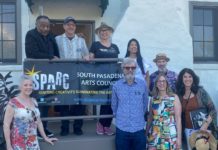
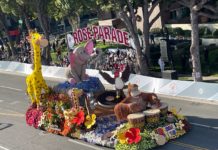


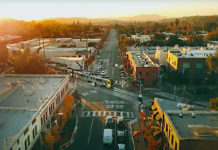







.png)




